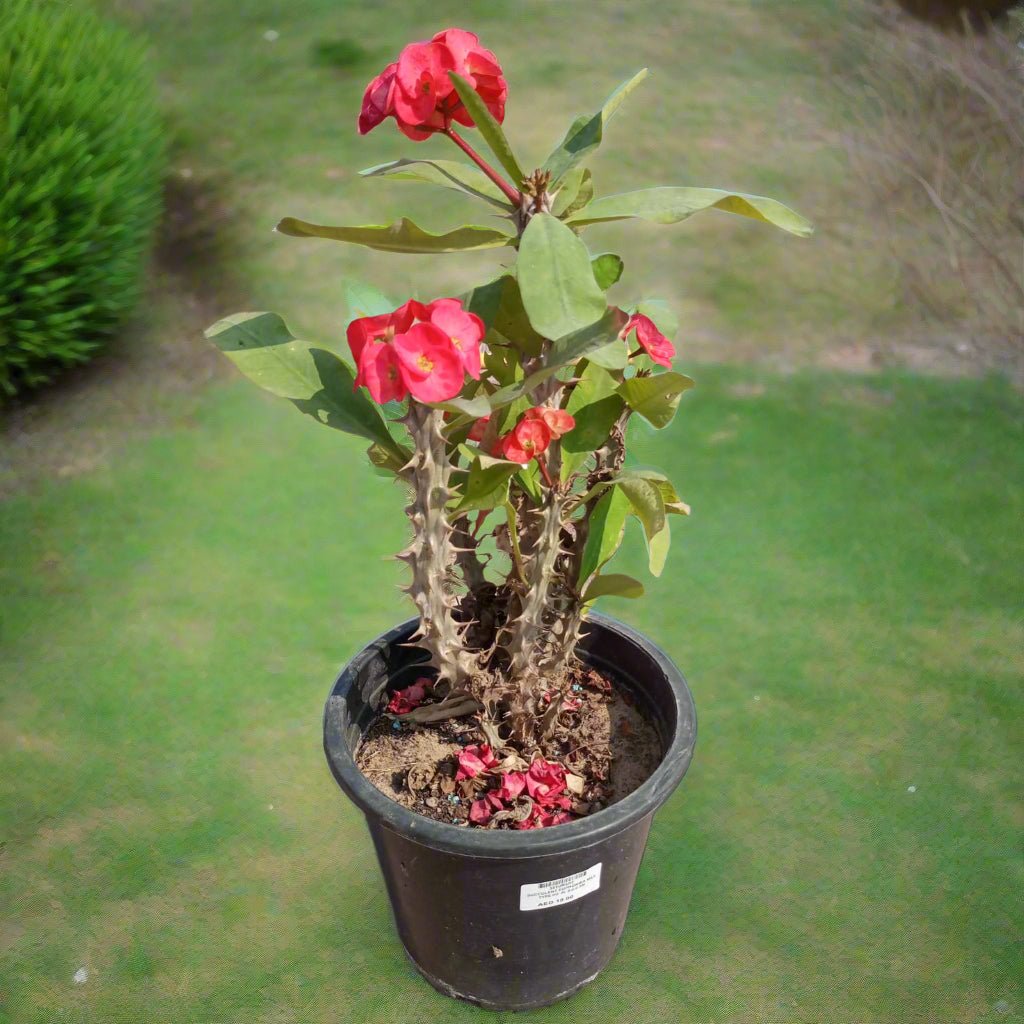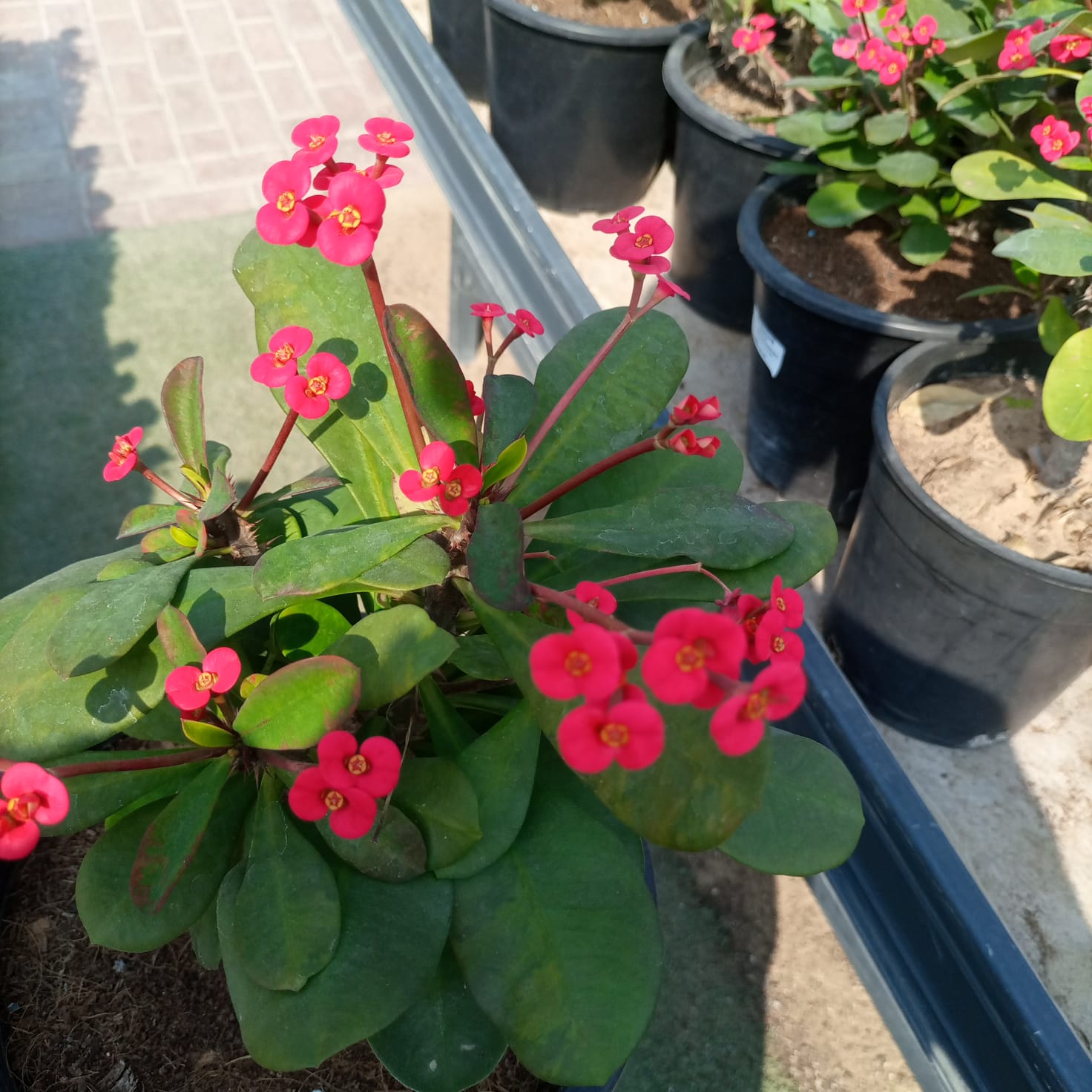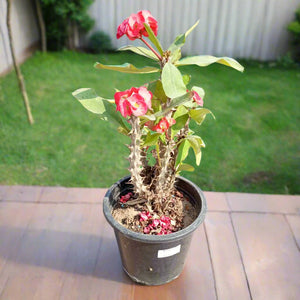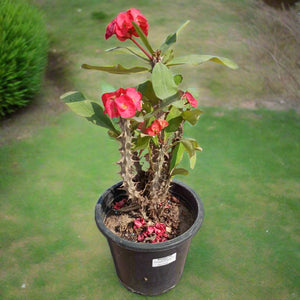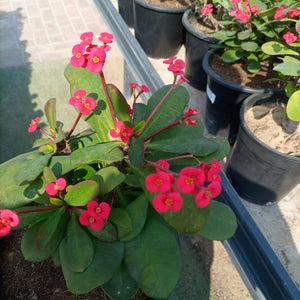Succulent Euphorbia Milii | 40 - 50cm
Guarantee Safe Checkout
Website Exclusive - Free Delivery in Dubai & Sharjah
Free replacement if you receive a defective item during delivery

Succulent Euphorbia Milii | 40 - 50cm
Succulent Euphorbia Milii Type H2, 5LP, 40-50CM
Euphorbia milii, commonly known as the Crown of Thorns, is a flowering plant in the Euphorbiaceae family. Native to Madagascar, it is known for its spiny stems, colorful bracts (often mistaken for petals), and vibrant flowers. Despite its name, the plant is not a true cactus but is often compared to one due to its thorny appearance and succulent nature.
Here are some key details about Euphorbia milii:
1. Appearance:
Size: Crown of Thorns typically grows as a bushy shrub or small tree, reaching heights of about 3–6 feet (1–2 meters) tall and wide. It can be pruned to maintain a smaller size.
Stems: The plant has succulent stems that are green and cylindrical, covered with sharp thorns. These thorns give the plant a defensive, spiny appearance, making it look similar to a cactus.
Bracts and Flowers: The colorful parts of the plant that are often mistaken for petals are actually bracts, which are modified leaves. The true flowers are small and inconspicuous, surrounded by these bright bracts. Crown of Thorns comes in various colors, including red, pink, yellow, orange, and white, depending on the variety.
3. Maintenance:
Pruning: To maintain a compact shape or encourage bushier growth, Euphorbia milii can be pruned in early spring before new growth starts. Pruning also helps remove any dead or damaged stems. The plant can also be cut back if it becomes too leggy or large.
Pest Control: It can be susceptible to pests like aphids, mealybugs, and scale insects. Regular inspection and treatment with insecticidal soap or neem oil can help manage pests.
Toxicity: The sap of Euphorbia milii contains compounds that can irritate the skin and eyes, and it is toxic if ingested. Gloves should be worn when handling the plant, and caution should be taken to keep it away from pets and young children.
4. Other Characteristics:
Flowering: Euphorbia milii is a long-blooming plant, typically flowering throughout the year if grown in optimal conditions. However, it may experience reduced flowering during the winter when the plant is not actively growing.
Varieties: There are many cultivated varieties of Euphorbia milii, with different flower colors and growth habits. Some varieties are bred for larger or more vibrant bracts, while others are compact and suited for container gardening.
Propagation: Euphorbia milii can be propagated from cuttings. It is best to take stem cuttings in the spring or summer. Allow the cut ends to callus over for a few days before planting them in well-draining soil. Rooting hormones can help speed up the process.
5. Common Problems:
Leaf Yellowing: This may indicate overwatering or poor drainage. Ensure the plant is not sitting in waterlogged soil.
Leggy Growth: If the plant is not receiving enough light, it may become leggy and elongated. Move it to a brighter location to encourage more compact growth and better flowering.
